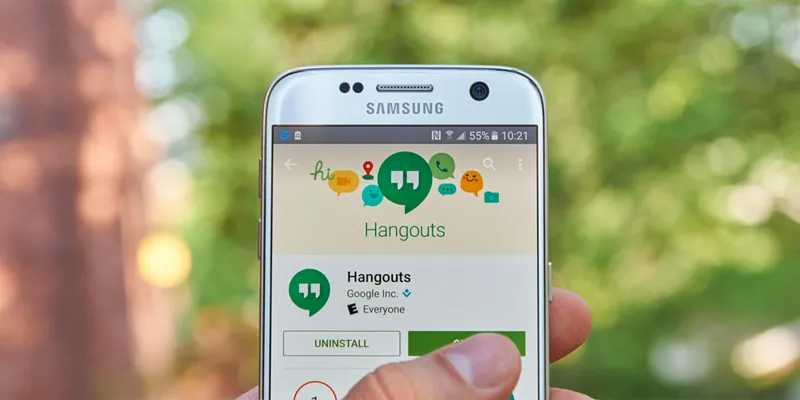Google’s new version of Hangouts looks ready to take on Slack for enterprise users
Every company understands the pain of hosting meetings with individuals outside the physical office space. Weak signals, faulty plug-ins, and jammed telephone lines often abruptly end these meetings, resulting in a loss of productivity and an unnecessary pile-on for the next day.
While companies like Skype and Slack have aimed to make life easier precisely such situations, they aren’t a hundred percent accurate or effective, and often lead to the same results. Google Hangouts too, though effective in simplifying chats with colleagues, managers, and others, hadn’t proved to be the most operational tool of communication. Until now.

Image : shutterstock
In a recent event, Google finally announced the upgrade of its Hangouts tool, which will comprise of two new avatars – Hangouts Chat and Hangouts Meet. Both will consist of new and additional features aimed at making audio and visual communication between users, especially working professionals, far more direct and convenient.
In a way, Hangout Chat and Hangout Meet can be considered the enterprise counterparts to Google’s Allo and Duo.
Hangouts Chat
Hangouts Chat is Google’s attempt to simplify team messaging, and is believed to contain the basic structures present in Slack. Like Slack, Hangouts Chat will offer a chat room service, making the app available on all iOS, Android, and Web devices. It also offers a ‘threaded conversations’ feature, the integration of which causes the company stall its initial release plan. Google has also allowed the functioning of bots, light-weight scripts, and third-party application support.
The bot here is called ‘@meet’, which is designed to automatically schedule meetings for your team with Hangouts Meet and Google Calendar. It does this by comparing Google Calendar schedules of chat participants and thus picking up an open time for all.
Additionally, Hangouts Chat will also be incorporated with an ‘advanced search’ option, which can filter conversations by file types.
Hangouts Meet
The purpose of Google’s Hangouts Meet is to ease the process of starting a meeting. Eliminating the need for using any kind of plug-in, sign-in etc., this tool attempts to kick-start a video conference using nothing more than a browser and a shared link, calendar invite, or an ad-hoc share.
Speaking to TechCrunch, Scott Johnston, Director of Product Management for Google Drive, stated, “One of the biggest things talking to our G Suite customers about Hangouts meetings is just how people are spending so much time on getting into the meetings. We’re a big supporter of automating the full meeting life cycle from agenda to follow-ups. But meeting value today is destroyed by time-to-start. It takes so long to simply get started.”
The company states that other than making your video or audio meet more convenient, the tools will also be lighter on the processor and won’t eat into your computer’s battery life. The core team has also made it a point to cut down on code size, so that the meetings will load instantly.
Along with this, Hangouts Meet now allows up to 30 participants to engage in a conference as opposed to Hangouts’ earlier capacity of 10. With every meeting that takes place using Hangouts Meet, a dial-in number containing a PIN code for instant access will be provided.
As for why Google unexpectedly decided to upgrade its Hangouts into two distinct components, Johnston says the aim was to deliver an easier approach for the two main entry-points that enterprise customers adhere to.
“One is: just get me into the meeting – I want to jump on and have a conversation. And they want to respond quickly to conversations that are going on within their team. So there are two app entry points, but they are the same family,” he says.
While Hangouts Meet is available in the market currently, customers will need to apply for a trial of Hangouts Chat separately. Additionally, they will need to be a G Suite customer to access these services. Despite the fact that the two new tools have been created with enterprise customers in mind, the company claims that the services are accessible to regular Gmail users as well.







